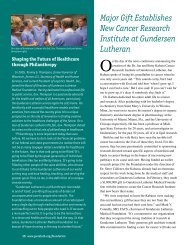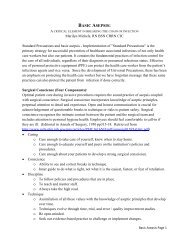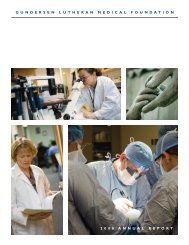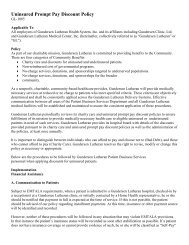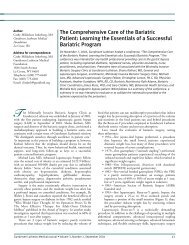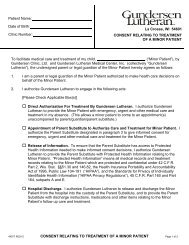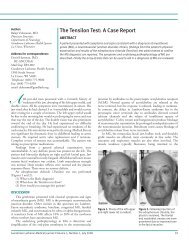Goals & Objectives Past and Present Issues of Infection Control ...
Goals & Objectives Past and Present Issues of Infection Control ...
Goals & Objectives Past and Present Issues of Infection Control ...
Create successful ePaper yourself
Turn your PDF publications into a flip-book with our unique Google optimized e-Paper software.
Name: ______________________________Department/Institution:____________________________<br />
Resistant Organisms<br />
Contact hours – 0.75<br />
<strong>Goals</strong> & <strong>Objectives</strong><br />
Goal<br />
To increase the learner's underst<strong>and</strong>ing <strong>of</strong> infection control strategies appropriate for h<strong>and</strong>ling<br />
patients with resistant organisms.<br />
<strong>Objectives</strong><br />
• Recall the 12 steps to prevent multiple resistant organisms.<br />
Test<br />
1. The most effective means to prevent infections from developing includes<br />
a. Prompt treatment with antibiotics when there is a positive urine culture.<br />
b. Aggressive use <strong>of</strong> antibiotics with the index case to prevent the spread <strong>of</strong> disease<br />
to other close contacts.<br />
c. Routine use <strong>of</strong> vancomycin to treat patients for a C. difficile infection.<br />
d. H<strong>and</strong> hygiene<br />
2. Vaccination programs are important in<br />
a. The prevention <strong>of</strong> resistant organisms in the hospital setting.<br />
b. The reduction <strong>of</strong> respiratory infections <strong>and</strong> subsequent treatment <strong>of</strong> secondary<br />
bacterial pneumonia.<br />
c. Employee health programs in all health care settings.<br />
d. All <strong>of</strong> the above.<br />
3. Catheter care includes<br />
a. Cleansing the meatus twice a day with an antiseptic solution.<br />
b. Using the smallest catheter possible to prevent local irritation.<br />
c. Using antibiotics when a patient has a WBCs (>10/hpf) in the urine analysis.<br />
d. Promptly returning the urine bucket to the dirty utility room for measuring the<br />
urine output.<br />
4. Antibiograms may provide guidance to physicians on<br />
a. The resistance patterns <strong>of</strong> commonly seen organisms <strong>and</strong> the related formulary.<br />
b. Treatment without culturing the patient <strong>and</strong> therefore saving money <strong>and</strong> possible<br />
pain from specimen collection.<br />
c. Treatment instead <strong>of</strong> ordering a susceptibility panel.<br />
d. The recommended treatment when the culture reports are negative.<br />
- 36 -








